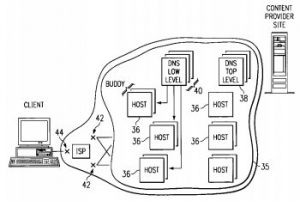The delivery of digital content through the Internet continues to increase dramatically as more people across the globe either gain access to the Internet or choose online access in favor of more traditional media, like cable television. Content delivery networks (CDNs), distributed networks involving proxy servers and data centers to provide high availability of content, are becoming increasingly valuable as Internet users continue to demand instant access to files and streaming media. A September 2014 blog post published by Cisco forecasted growth in global Internet traffic crossing CDNs from 36 percent in 2013 up to 57 percent in 2018. In the United States, traffic through CDNs was forecast to increase from 61 percent up to 88 percent during the same period of time.
Internet broadband speeds are more than one thousand times faster than the dial-up Internet access that was available by the mid-1990s. Currently, the world’s largest CDN is Akamai, a CDN and cloud services provider based in Cambridge, MA, which operates 216,000 servers across 120 countries and within more than 1,500 networks to deliver up to 30 percent of Internet traffic worldwide.
The success of Akamai’s business is largely based on the foundation of an innovative leap in Internet architecture developed by a professor and a student at the Massachusetts Institute of Technology (MIT). Both Tom Leighton and Daniel Lewin are members of the 2017 class inducted into the National Inventors Hall of Fame. Today, August 22nd, marks the 17th anniversary of the issue of the patent for which Leighton and Lewin have been recognized as major pioneers in the field of CDNs. The work of both of these innovators continues to serve as a basis for perhaps the most successful firm in the CDN space currently.
Leighton and Lewin Solve the World Wide Wait
During the 1990s, the World Wide Web (WWW) grew in stature from a small network of hyperlinked documents to become a very important mode of information and media access for consumers across the world. Dramatic increases in Internet traffic during that decade, however, created major networking problems across the entire WWW architecture. More intelligent forms of managing increasingly higher loads of data traffic were necessary to solve what is referred to as the “World Wide Wait.”
In 1995, WWW pioneer Tim Berners-Lee, at the time a member of the faculty at MIT, challenged colleagues at that academic institution to develop answers to the problem of data congestion which he foresaw as a major problem limiting the impact of the Internet. MIT math professor Dr. Tom Leighton was an authority on parallel algorithms who collaborated in the mid-1990s with graduate student Daniel Lewin to develop a network architecture which could be used to ensure that massive amounts of data could be made available to users visiting websites. Leighton and Lewin created algorithms which were capable of intelligently routing and replicating content across a large network of distributed servers.
 Leighton and Lewin’s pioneering work into the development of CDNs is the focus of U.S. Patent No. 6108703, entitled Global Hosting System and issued on August 22nd, 2000. It claims a distributed hosting framework operative in a computer network in which users of client machines connect to a client provider server, the framework having a routine for modifying an embedded object URL to include a hostname pretended to a domain name and path, a set of content servers distinct from the client provider server for hosting some of the embedded objects normally hosted by the client server, a first level name server providing a first level domain name service (DNS) resolution and a second level name server providing a second level DNS resolution. The client machines generate a web page including the modified embedded object URL served by one of the content servers as identified by the first or second level name server. The resulting innovation provides a decentralized hosting solution which allows Internet users to more efficiently obtain content across the Internet while also giving control of the content to the content provider.
Leighton and Lewin’s pioneering work into the development of CDNs is the focus of U.S. Patent No. 6108703, entitled Global Hosting System and issued on August 22nd, 2000. It claims a distributed hosting framework operative in a computer network in which users of client machines connect to a client provider server, the framework having a routine for modifying an embedded object URL to include a hostname pretended to a domain name and path, a set of content servers distinct from the client provider server for hosting some of the embedded objects normally hosted by the client server, a first level name server providing a first level domain name service (DNS) resolution and a second level name server providing a second level DNS resolution. The client machines generate a web page including the modified embedded object URL served by one of the content servers as identified by the first or second level name server. The resulting innovation provides a decentralized hosting solution which allows Internet users to more efficiently obtain content across the Internet while also giving control of the content to the content provider.
Akamai’s Business Success and the Heavy Price of 9/11
Leighton and Lewin continued to collaborate in the private sector, spinning off their technology in 1998 into a private venture called Akamai, which translates as “intelligent” or “clever” from Hawaiian. Leighton, who would become CEO of Akamai years later, initially served the company as chief scientist while Lewin was the company’s first chief technology officer. According to Akamai’s company history, the firm delivered its first live traffic in February 1999 when it transmitted a pixel buried in the official Disney website. That March, Akamai’s business began to take off after it was successfully used to maintain high availability of media content published online for the NCAA March Madness tournament that year. Incredibly high demand for the college basketball tournament as well as the movie trailer for Star Wars: Episode I – The Phantom Menace, another media operation partnering with Akamai, solidified both the value of Akamai’s service as well as the firm’s position as a pioneer in the CDN sector.
The tragic terrorist attacks taking place in the U.S. on September 11th, 2001, unfortunately took a major toll on Akamai as Lewin was a passenger on American Airlines Flight 11, the first of the two planes which would crash into the twin towers of the World Trade Center. It’s widely reported that Lewin is likely the first casualty of the attacks; he was sitting in seat 9B and calls relayed to authorities on the ground indicate that the passenger seated in seat 9B was the first to be killed before the plane made contact with the World Trade Center. Lewin, an American citizen of Jewish heritage who served four years with the Israel Defense Forces, had an understanding of Arabic and it’s possible he may have understood what was going on as a passenger of Flight 11 and may have tried to intervene. In a video produced by the National Inventors Hall of Fame for the 2017 induction, Leighton gives a great deal of credit to Lewin’s tenacious personality as a reason why Akamai ultimately became very successful even after Lewin passed. Interestingly, Leighton also notes that 9/11 was another flashpoint in the growth of Akamai as the company handled a tremendous increase of Internet traffic on that day as people searched for information on the events as they developed.
Lewin was already an award-winning computer scientist by the time of his death, having been recognized by Israel’s Technion Institute as 1995’s Outstanding Student in Computer Engineering. Lewin didn’t finish his Ph.D studies at MIT by the time of the September 11th attacks but his National Inventors Hall of Fame profile indicates that he is listed as an inventor on 25 U.S. patents. Leighton’s Hall of Fame profile notes that he was recognized by U.S. News & World Report in 2001 as a Top 10 Technology Innovator. A holder of 40 U.S. patents, Leighton is also a fellow with the American Academy of Arts & Sciences, the National Academy of Engineering and the National Academy of Sciences.

![[IPWatchdog Logo]](https://ipwatchdog.com/wp-content/themes/IPWatchdog%20-%202023/assets/images/temp/logo-small@2x.png)



![[Advertisement]](https://ipwatchdog.com/wp-content/uploads/2024/04/UnitedLex-May-2-2024-sidebar-700x500-1.jpg)
![[Advertisement]](https://ipwatchdog.com/wp-content/uploads/2024/04/Artificial-Intelligence-2024-REPLAY-sidebar-700x500-corrected.jpg)
![[Advertisement]](https://ipwatchdog.com/wp-content/uploads/2024/04/Patent-Litigation-Masters-2024-sidebar-700x500-1.jpg)

![[Advertisement]](https://ipwatchdog.com/wp-content/uploads/2021/12/WEBINAR-336-x-280-px.png)
![[Advertisement]](https://ipwatchdog.com/wp-content/uploads/2021/12/2021-Patent-Practice-on-Demand-recorded-Feb-2021-336-x-280.jpg)
![[Advertisement]](https://ipwatchdog.com/wp-content/uploads/2021/12/Ad-4-The-Invent-Patent-System™.png)






Join the Discussion
No comments yet.